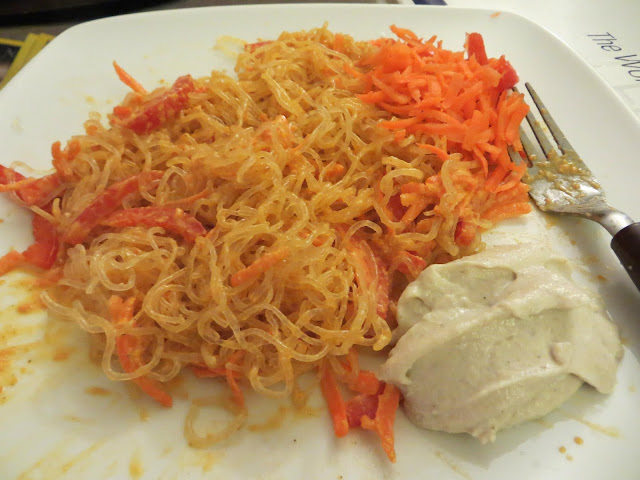No matter if we stash that bag of chips in the topmost shelf of that cabinet, or bury that dark chocolate deep in the fridge or promise ourselves not to buy "comfort food" in the next grocery trip or shut off our senses when passing by that steakhouse or pizza place, we inevitably end up using that step stool, ravaging the fridge, sneaking in trips to the corner store =), or indulging in the deep fried goodness on Friday evenings. Cravings are relentless.
The Internet is littered with tips on how to handle cravings. So is your nutritionists's office, personal trainer's studio, and, of course, the local supermarket with "low calorie," "low sugar," "low sodium" snacks to 'satisfy' your cravings. The latter thrive on the satisfaction we derive as we sink in our chair, having chowed down their snack; the former aim to latch on the guilt that accompanies afterwards. None, however, addresses the root cause of cravings.
The biggest part of our cravings resides in our taste buds. Other factors like smell or sight of food, happy memories, ongoing stress, and genetics play smaller roles to varying degrees from person to person.
The good news is, taste buds are adaptable!
If you find that hard to believe, consider this: do you feel like eating a mildly-spiced, cooling salad right after a salty, hot snack? Likewise, are fritters as tempting right after a healthful morning smoothie? These may be temporary changes in preferences, but a spicy food lover will usually find mildly spiced food 'bland'; a fried food lover, sautéed food 'less tasty'; a donut person, fruits 'less sweet'.
Point à noter: our taste buds adapt to -- and ask for -- the food we feed them over a long period of time.
So what can we do to "reboot" our taste preferences? If we can (re-)train our taste buds on finer, truly naturally-occurring flavors, before you know, they will stop asking for foods that accompany restraint and guilt. You might still have cravings but they will be of the joyful, healthful kind, not the suffering one. Healthy eating IS highly addictive too! Just that no one is telling us that.
Of all the naturally occurring foods, green leafy vegetables are the most rich and diversified in taste (and micronutrient value). When eaten raw, without significant amounts of processed additives like oil, salt, pepper, sugar, etc., they grow on our taste buds. Even a relatively short-term, but consistent, consumption of leafy greens changes our taste preferences. Three to four weeks is all they ask for!
How do I start incorporating more raw greens in my food, without throwing up, might you ask. For me, green smoothies paved the way for a high raw-vegan lifestyle that I would live on for two years. The first year of smoothies would lead to more green juices in the second year. The first juices with more fruit to mask the flavor of greens would make way for purely green juices. I'm still working on the latter, though =).
If a high raw-vegan lifestyle were merely a diet for me (and countless others walking the planet), I (and we) would've fallen off long ago. Two years is not a very long time, but you know eating this way is 'home' for your body and mind when, after eating 8-10 slices of pizza on a crazy, 17-hour day at work, you find yourself making a quick green juice before heading out the next morning!
Would you rather spend the rest of your life suffering and slapping down individual cravings or would you take a month to work on redefining what your body and mind crave for?
If doctors, nutritionists, personal trainers, and food companies and advertisers told you to eat natural, plant-based foods, they would mostly go out of business as the general population would be much healthier. So would the pharmaceutical industry. Would you rather wait for them to tell you what to do or be judicious, take charge, and transform your life before it hits the hospital run?
























